The AMD A8-3850 Review: Llano on the Desktop
by Anand Lal Shimpi on June 30, 2011 3:11 AM ESTEver since the arrival of Conroe back in 2006, we've only really recommended AMD for its (sometimes incredible) value. Recommending AMD for those looking for absolute performance pretty much ended when the Pentium 4 retired.
AMD is looking to change that with the arrival of its first Fusion APUs. These APUs marry one or more AMD x86 cores with dozens if not hundreds of Radeon "cores" on a single die. While today the APU is little more than a cohabitation of these two computing architectures, the end goal is something far more integrated:

Llano is AMD's second Fusion APU, the first being Zacate which we met earlier this year. Llano shouldn't be all that unfamiliar to you either, the notebook version of the APU launched just two weeks ago. Our conclusions were as you'd expect: sub-par x86 performance but competitive battery life and great gaming performance for a value notebook. If gaming is going to be the most intensive thing you do on your notebook, you may find yourself wanting one based on a Llano APU.
Now it's time to look at Llano on the desktop. We previewed the desktop Llano alongside the mobile version but today we're back with much more detail. This article will focus on the basics: CPU performance, GPU performance and the associated details. Ian has a final review of one of the first desktop Llano motherboards - the ASRock A75 Extreme6 as well as a look at overclocking the new desktop APU. Finally Ganesh's article takes an in-depth look at how Llano works as an HTPC platform.
The APU
Although mobile Llano has to worry about fitting into thin and light notebooks, the desktop version has a lot more breathing room and as a result it comes to us in a pretty traditional package. Motherboard backwards compatibility is thrown out the window as you need pins to get video output from the APU to an on-board VGA/DVI/HDMI header and as a result we have a new platform: Socket-FM1.
Socket-FM1 is a 905-pin ordeal that looks reminiscent of the original Clawhammer CPU:
Despite the socket change, heatsink specifications haven't changed. All existing Socket-AM2/AM2+/AM3/AM3+ heatsinks should work just fine as long as they can handle the rated TDP of the chip you're cooling.
The desktop Llano launch starts small. AMD is only introducing four parts today, two of which will be available later:
| AMD Llano Desktop Lineup | |||||||||
| GPU | Total TDP (GPU + CPU) | CPU Cores | CPU Clock (Base/Turbo) | GPU Cores | GPU Clock | Price | |||
| AMD A8-3850 | Radeon HD 6550D | 100W | 4 | 2.9GHz | 400 | 600MHz | $135 | ||
| AMD A8-3800 | Radeon HD 6550D | 65W | 4 | 2.4/2.7GHz | 400 | 600MHz | $?? | ||
| AMD A6-3650 | Radeon HD 6530D | 100W | 4 | 2.6GHz | 320 | 443MHz | $115 | ||
| AMD A6-3600 | Radeon HD 6530D | 65W | 4 | 2.1/2.4GHz | 320 | 443MHz | $?? | ||
The A8-3850 and A6-3650 are going to be the first Llano APUs available, both carry a 100W TDP rating. While this may seem high, do remember that 100W is for the CPU and GPU combined.
Although Llano does support AMD's new Turbo Core technology, neither of the parts launching today have it enabled. The A8-3850 and A6-3650 run at 2.9GHz and 2.6GHz, respectively. The 3800 and 3600 will drop base clock speeds to hit a lower TDP but allow you to turbo up depending on workload. For an explanation of how Turbo Core works, flip back to our mobile Llano article.
Pricing is pretty reasonable. For $98 you can buy an Athlon II X4 640 running at 3.0GHz. For $37 more AMD will sell you an A8-3850 APU, effectively determining the price of the integrated GPU. AMD expects to see desktops built around the A6 to sell for $500 - $600, and A8 based systems to go for between $600 and $700
| CPU Specification Comparison | ||||||||
| CPU | Manufacturing Process | Cores | Transistor Count | Die Size | ||||
| AMD Llano 4C | 32nm | 4 | 1.45B | 228mm2 | ||||
| AMD Thuban 6C | 45nm | 6 | 904M | 346mm2 | ||||
| AMD Deneb 4C | 45nm | 4 | 758M | 258mm2 | ||||
| Intel Gulftown 6C | 32nm | 6 | 1.17B | 240mm2 | ||||
| Intel Nehalem/Bloomfield 4C | 45nm | 4 | 731M | 263mm2 | ||||
| Intel Sandy Bridge 4C | 32nm | 4 | 995M | 216mm2 | ||||
| Intel Lynnfield 4C | 45nm | 4 | 774M | 296mm2 | ||||
| Intel Clarkdale 2C | 32nm | 2 | 384M | 81mm2 | ||||
| Intel Sandy Bridge 2C (GT1) | 32nm | 2 | 504M | 131mm2 | ||||
| Intel Sandy Bridge 2C (GT2) | 32nm | 2 | 624M | 149mm2 | ||||
Architecturally desktop Llano is no different than its mobile counterpart. These are all quad-core parts with updated 32nm cores, boasting a ~6% increase in IPC over their 45nm Athlon II predecessors. Each core has a private 1MB L2 cache for a total of 4MB per quad-core APU.
The GPU side isn't different architecturally either, you're still looking at a Sumo core derived from AMD's Radeon HD 5570. Desktop Llano is available with either 400 GPU cores or 320 cores (you can get the mobile part with only 240 cores enabled as well). While the mobile parts top out at 444MHz, the extra TDP available in a desktop chassis allows AMD to ratchet up the GPU clock to 600MHz for the A8-3850.
AMD calls the two GPU configurations the Radeon HD 6550D and 6530D. Just like you can with mobile Llano, you can also pair a desktop Llano APU with a discrete GPU to have them both run in an asymmetrical CrossFire mode (with limitations of course):
| AMD Radeon Dual Graphics Branding | ||||
| Discrete GPU | 6550D | 6530D | ||
| HD 6670 | HD 6690D2 | HD 6690D2 | ||
| HD 6570 | HD 6630D2 | HD 6610D2 | ||
| HD 6450 | HD 6550D2 | HD 6550D2 | ||
The Chipset
I hate to keep drawing comparisons between desktop and mobile Llano APUs but we also have two chipsets on the desktop side: A75 and A55. The A75 chipset is the high end option with 6 x 6Gbps SATA ports and 4 x USB 3.0 ports:
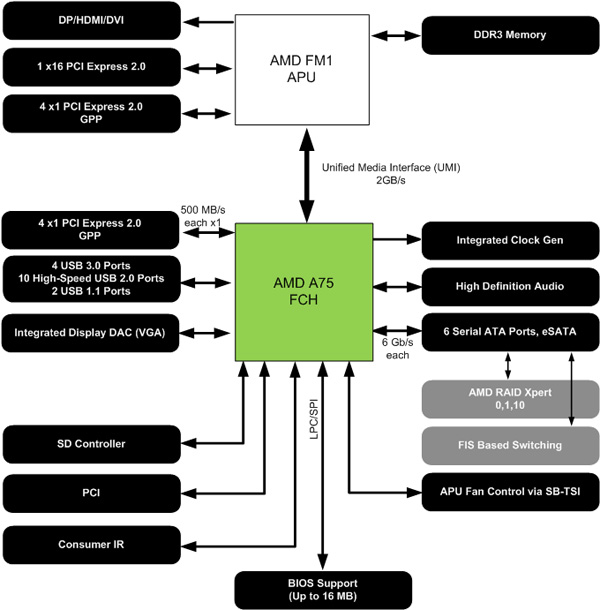
The A55 is the lower power, cost effective option that gets rid of all USB 3.0 support and backs down to 3Gbps SATA:
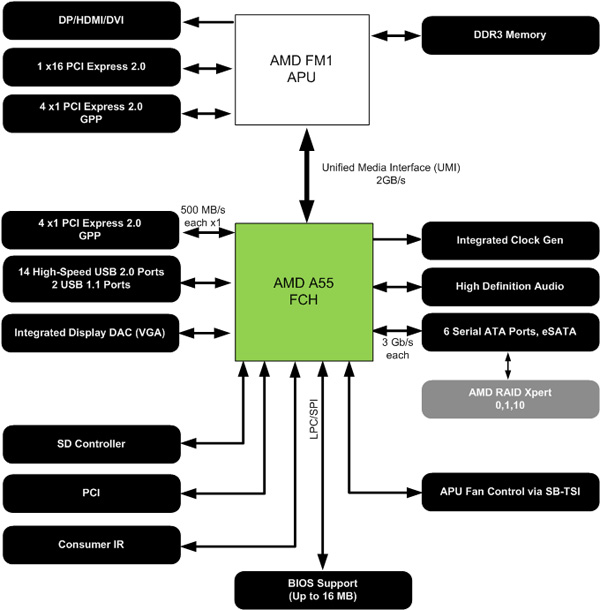


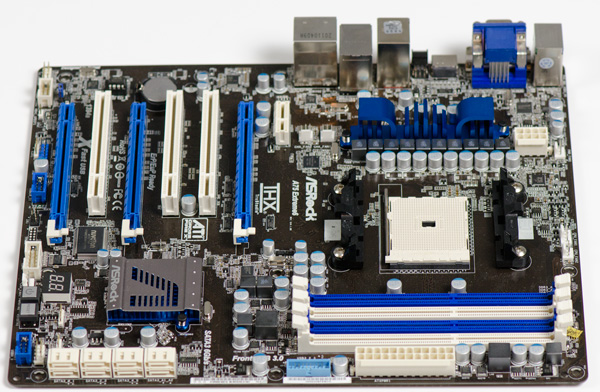
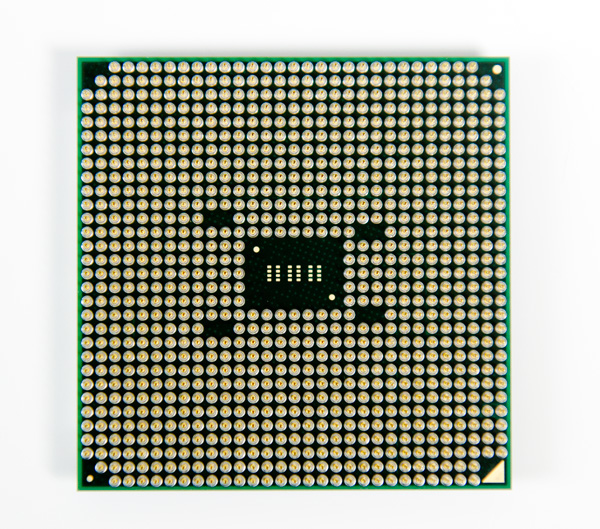
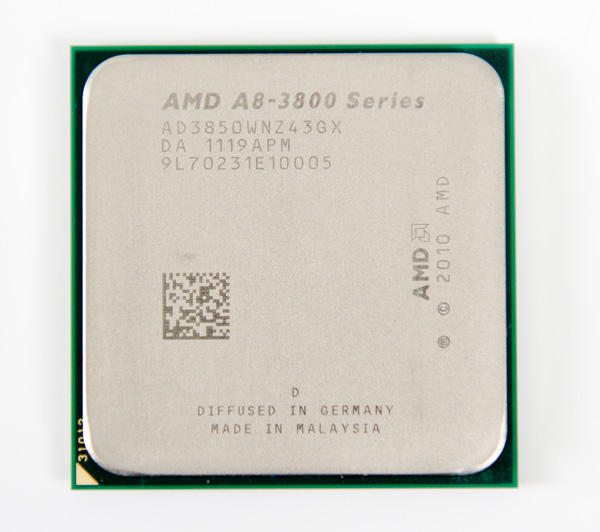
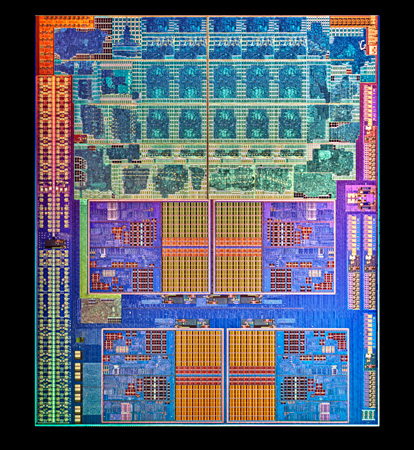








99 Comments
View All Comments
Roland00Address - Thursday, June 30, 2011 - link
1366x768 would be preferable than 1024x768, for very few things use 1024x768 anymore, and 1366x768 is the default resolution for 720p tvs, 18.5 inch monitors, and older cheap monitors bought in the last 3 to 4 years.BigDDesign - Friday, July 1, 2011 - link
I like to play games. 1024X768 is useable in a pinch. So bragging is out. Who cares?CSMR - Sunday, July 3, 2011 - link
What do you mean, image quality comparison? If two graphics cards differ in image quality, one of them does not work and needs bug-fixes. So your question is really, are there any bugs in graphics output on this "APU".Unfortunately sites often do "image quality comparisons" but it is nonsense, actually marketing nonsense.
Musafir_86 - Tuesday, July 5, 2011 - link
-Image Quality (IQ) here means the rendered 3D images of 3D games, the latest of them includes Crysis 2, DiRT 3, etc.-In most games, different levels of quality (quality setting like low, medium, high) is provided for scalability reason (so they can cater a wider range of customers).
-Different GPU uses different algorithms/techniques or 'tweaks' to squeeze maximum performance at a given quality metric. So, in applying those tweaks, the rendered output is sometimes different between one another even though the quality level is same (e.g. High vs. High). Driver maturity is also another contributing factor.
-FYI, Anandtech DOES provide IQ comparisons before, especially when comparing new Radeon and GeForce generations.
-BTW, I hope the IQ comparison as promised by Ganesh would be available soon.
Regards.
ckryan - Thursday, June 30, 2011 - link
Like the mobile version, Llano on the desktop is actually kinda impressive. Not necessarily for its current perfomance, but rather as an indication of what to expect from Trinity. With a significant performance boost to both parts of the CPU, I can easily envision my next laptop using Llano's successor.While its impossible not to compare these parts to Sandy Bridge, its not like a Phenom II x4 is hopelessly obsolete. Llano's desktop power figures are pretty good, but it seems like the 2105 draws way more power than it needs at idle -- my i5 2500k/P67 and a GTX 460 pulls 49w from the wall according to my P3 Kill A Watt.
Still, I'm glad to see AMDs fusion initiative paying some dividends. It's good to have options, but I think it's time they stopped playing hard to get with Bulldozer.
L. - Thursday, June 30, 2011 - link
Hey .. I was just thinking, considering the scaling, would you just run those tests again with a decent memory kit ?I mean, most people buying Llano will probably get 1866 at the price of 1600, considering usual RAM market trends (1333 is dead/ price rising - 1600 is bottom price, many kits actually do much more than their SPD - 1866 is bottom within 3 months I guess, etc.).
So, what about some real neat kits @ 2.2+ or even relatively cheap ones around 2Ghz ?
I'm pretty sure that's where Llano will start making sense (or ... with quad-ddr5 .. 8 times the bandwidth should do the trick, right ?)
L. - Thursday, June 30, 2011 - link
I forgot one detail, there is no benchmark showing how that 6550D fares when you add a bit of shiny to your gfx settings, is it really so pitiful noone would ever consider pressing the button ?mino - Sunday, July 3, 2011 - link
i* cannot handle that, so writing such is a big no-no.jjj - Thursday, June 30, 2011 - link
No overclocking section :(I know the ASRock A75 Extreme6 review covers it a bit,but not nearly enough(doesn't even tell us idle voltages)
Was curious to see how it overclocks in a few scenarios:
- with a discrete GPU (IGP fully sleeping)
- with 2 CPU cores disabled (if it is even possible)
- with the GPU starved by limiting the ammount of ram it gets
- how far can it be underclocked
beginner99 - Thursday, June 30, 2011 - link
Marketed for years as being something special (APU) but seriously it's nothing special at all. Intel was 1.5 years earlier (Arrandale). Agreed the power of the igp was pretty bad but still...This is basically only usable in the mobile version. And there it ain't to bad especially in terms of power consumption. Considering AMDs mobile track record in the last couple of year I would say its a pretty good comeback. And this was obviously its main target.